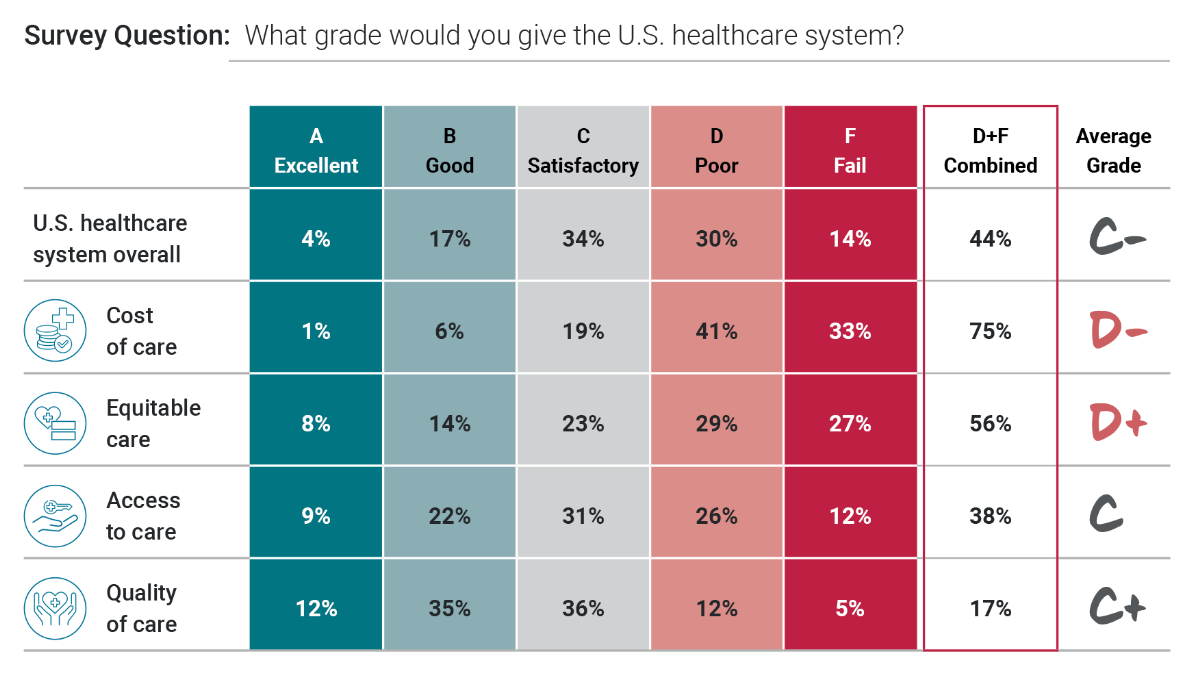Majorities Rate Cost, Equity of U.S. Healthcare Negatively
A plurality of Americans give the U.S. healthcare system overall a poor or failing grade, and majorities rate its affordability and equity the same way, according to the West Health-Gallup 2022 Healthcare in America Report. Access to healthcare and quality of care are regarded as somewhat better, though neither earns majority-level positive grades.
In all, 21% of U.S. adults grade the healthcare system with an “A” or a “B,” 34% with a “C,” and 44% with a “D” or an “F.” Grades of D or F are even higher for cost (75%) and equity (56%) of care. Though access to healthcare receives negative ratings, on balance, its poor or failing grades are lower (38%). Meanwhile, 47% of Americans grade the quality of care in the U.S. as excellent (A) or good (B).
The survey was conducted by web from June 21-30, 2022, with more than 5,500 U.S. adults via the probability-based Gallup Panel. Full results can be found in the West Health-Gallup 2022 Healthcare in America Report, which explores the current struggles Americans face to pay for needed care and their concerns about the future of healthcare costs.

Americans Agree That Healthcare Affordability Doesn’t Make the Grade
Assessments of healthcare affordability in America are consistently low, regardless of annual household income, as 72% to 78% of U.S. adults across all income groups assign D or F grades to it.
In a follow-up interview, one poll respondent, Deni Hagains Goss from Pennsylvania, explained her grade for healthcare’s cost: “I [grade it an] F … I have preexisting illnesses. … I have asthma. And the medication for that is just so astronomical. … I pay a lot of copays. … My general copay just to see a physician is [about] $40. Recently, I had an ultrasound of the heart … and that was like $200 … after my insurance coverage.”
Ratings of Equity, Access and Quality Differ by Gender and Race/Ethnicity
While there is general agreement across demographic subgroups that the high cost of healthcare deserves a poor or failing grade, ratings on equity, access and quality differ by gender and race/ethnicity.
- Women are more likely than men to assign D or F grades to each of these three dimensions of healthcare, by an eight- to 12-percentage-point margin.
- Black (66%) and Asian Americans (64%) are more likely than White and Hispanic Americans to assign D or F grades for equity.
- People of color are more likely than White adults to grade access with a D or an F.
- Black and Hispanic Americans are more likely than White and Asian Americans to grade quality as a D or an F.

